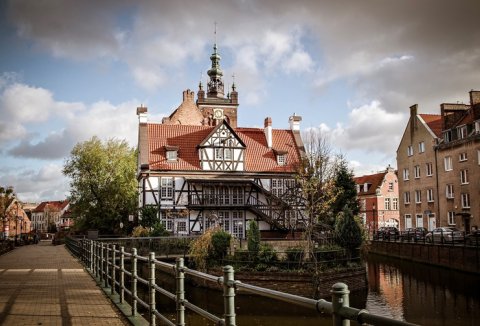Gdansk

It is the largest city of Tricity of over thousand year old history, located at the Gdańsk Bay. Over the centuries it experienced many different cultures, today it is one of the biggest tourist attractions of the northern part of Poland. However, it is worth visiting not only Gdańsk, but also Gdynia and Sopot, other cities of the Tricity. In this case car rental might be a great convenience. What is worth seeing in Gdańsk?
The Long Lane and The Long Market
The Long Market is a representative area, which also functions as the town square. Along with the Long Lane it creates the Royal Route. The most important secular building are located at the Long Market: the Gdańsk Main Town Hall and the Artus Court. The city’s most affluent patricians and rich merchants used to live there in 16th and 17th century. The place is full of historic tenements, each of them has its own story. Tenements of Gdańsk are very characteristic with their narrow facades and attic above them, richly decorated with crests, figures and characters of antique heroes. The oldest preserved houses originate from the Middle Ages – it emphasizes the atmosphere of the city, compared to modern buildings. The Royal Route is the favorite gathering place for both townspeople and visitors. You can find here many cafes, pubs and restaurant serving traditional polish dishes (such as polish breaded pork chop and pierogi), herring and exotic cuisine. If you get near the Solidarity Square you can visit the European Solidarity Centre.
Gdańsk Main Town Hall, Artus Court, The Lady In The Window
Museum of Gdańsk is located in the magnificent gothic-renaissance town hall. It was built in stages from 1379 to 1492, it used to be the headquarters of city authorities. The most precious part of the building is the Council’s Chamber (also called the Red Chamber), which is considered by historians the most splendid modern city hall interior. Artus Courts, which flourished in from 16th to 17th century, have been created all over Europe since Middle Ages. The one in Gdańsk is one of the greatest objects this type in the world. It used to be a meeting place of merchants, a center of social life (meetings of the elite of Gdańsk, feasts, concerts, performances of musicians, tightrope walkers and puppeteers), a market, many important dignitaries, politicians and artists were hosted here. Every day at 13:03 (also at 15:03 and 17:03 in the summer season) from the top window of Nowy Dom Ławy (a building adjacent to the Artus Court) a seventeenth century young Gdansk woman is looking out, it is the famous “lady from the window”.
Neptune’s Fountain
Standing in front of the Artus Court, this historic fountain has been a symbol of Gdańsk since 1633. The sculpture’s project was made by Abraham van den Blocke and Neptun himself is a reference to the everlasting relation of Gdańsk and the sea. Neptun – the god of the sea in Roman religion – faces the tenements, former residence of polish kings during their stay in Gdańsk, and keeps his head down. In Gdańsk there is a legend of the famous Goldwasser liqueur, Neptun contributed to its creation. The god of the sea was outraged by the fact, that visitors used to throw money into the fountain, so he hit the water with his trident and shattered the gold into pieces. Since then, pieces of gold shine in the delicious herbal liqueur.
Westerplatte
The defense of Westerplatte in September 1939 marked the start of World War II and therefore became a symbol of polish resistance to aggression of the Third Reich. This place and heroic deeds were described in literature and movies many times. Today every place related to the battle of Westerplatte is declared on the List of Historic Monuments. Westerplatte is located on the Port Island, in the north-eastern part of Gdańsk. Renting a car is a perfect idea to get there quickly.









